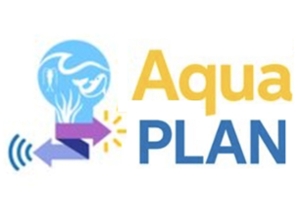Research project
Aquatic Pollution from Light and Anthropogenic Noise (AquaPLAN): Management of Impacts on Biodiversity
What are the effects of light pollution from cities and bridges and noise pollution from passing vessels and nearby road traffic on migratory fish passage and spawning in rivers?
- Duration
- 2024 - 2028
- Contact
- Hans Slabbekoorn
- Funding
-
 Funded by the European Union under the Horizon Europe Programme, Grant Agreement No. 101135471 (AquaPLAN). Research and Innovation Action | HORIZON-CL6-2023-BIODIV-01. Views and opinions expressed are however those of the author(s) only and do not necessarily reflect those of the European Union or European Research Executive Agency (REA). Neither the European Union nor the granting authority can be held responsible for them.
Funded by the European Union under the Horizon Europe Programme, Grant Agreement No. 101135471 (AquaPLAN). Research and Innovation Action | HORIZON-CL6-2023-BIODIV-01. Views and opinions expressed are however those of the author(s) only and do not necessarily reflect those of the European Union or European Research Executive Agency (REA). Neither the European Union nor the granting authority can be held responsible for them.
- Partners

There is growing concern over the increasing introduction of sensory pollutants into aquatic environments across the urbanized world of the Anthropocene. The distribution of light and noise pollution (LNP) is expected to modify species distributions, population structure, and community composition. While LNP impacts on aquatic biodiversity have been studied and reviewed in isolation, AquaPLAN aims at progress in our understanding of combined impacts of LNP in marine, freshwater, and estuarine ecosystems, at individual, population, community, and ecosystem level.
The AquaPLAN team members at Leiden University will study the underwater light conditions and soundscapes of Dutch river systems. We will collect light measurements and sound recordings in the field and we will also test the importance of natural darkness and natural soundscapes, as well as the potentially detrimental effects of ALAN and anthropogenic noise, for their impact on swimming decisions of migratory fish. We will collaborate with outdoor teams conducting tagging studies in the field and use a revolutionary test facility for indoor studies: the MIGRADROME.

The MIGRADROME is a 7 meter long swim tunnel with an inner and outer tank. The inner tank is a 5 meter long test transect in which the water flow can be adjusted and a gradient of water flow can be induced by tilting (i.e. tilted flume). The double tank construction serves in keeping the test fish away from the air-water boundaries of the outer tank, so they are tested in more homogenous light and sound conditions. The facility will allow detailed measurements of swimming capacity and movement tendency of migratory fish, such as sticklebacks.

AquaPLAN will not only quantify the impacts of LNP on migratory fishes, but also zoom into patterns and processes across taxa: from marine mammals, sea birds, and sea turtles to coastal invertebrates and zooplankton. Furthermore, the project will be explicitly interdisciplinary, with not only biological and environmental scientists, but also social scientists, who will investigate existing policy interventions, potential mitigation measures, and historical, current, and changing stakeholder perceptions.
